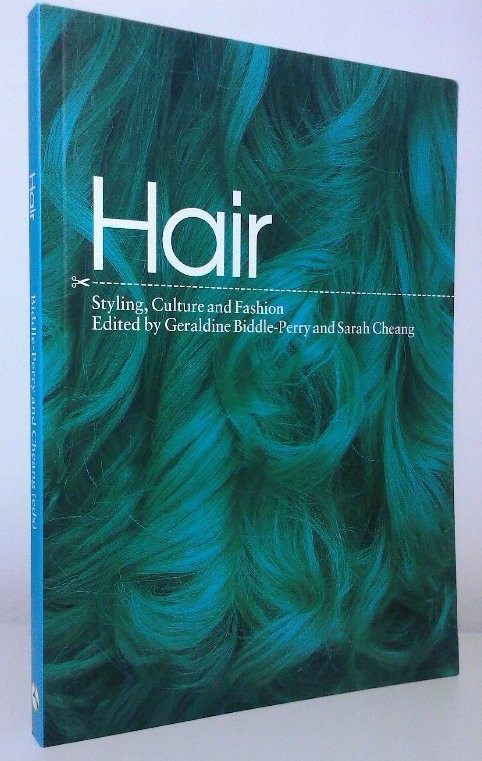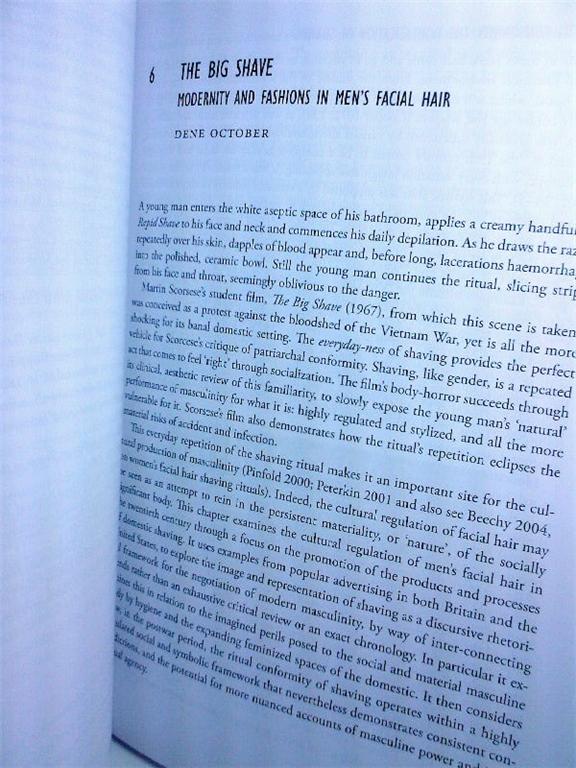
<fiver: hairpiece>
Berg has just released the book Hair, Styling Culture and Fashion which I contributed a chapter to. To celebrate - and this might be a hair's breadth away from puffery - I commisioned my (now) expert opinion on body hair in literature. Having combed through my bookshelves, I present to you five books with great hairy themes.

5 Hairy Hyde
The Darwinian association between face hair and animal ancestry took root in the Victorian popular imagination. The link between civilization and hairless faces was underlined by the cultural obsession with the myth of Homo ferus, which cautions against the beast within. The myth subsisted in popular fiction with abandoned children-turned-feral as the key motif. Hairiness as a key characteristic of the myth may have survived partly due to the promotional activities of travelling carnivals that drew on folklore in faking their freaks. Krao of
4 Tress
In A Tress of Hair, the Guy de Maupassant story, hair has a stubborn materiality. Finding the locket in an old piece of furniture, the protagonist is moved almost to weep: ‘Was it not strange that this tress should have remained as it was in life, when not an atom of the body on which it grew was in existence?’ In 2008, the Dominic Winter Auction House sold a locket of hair said to have been cut by Cassandra Austin at the funeral of her sister in 1817. Jane Austen’s supposed strands sold for £4,800, some way short of the £30,000 for a first edition of Sense and Sensibility at the same sale.
3 Hair Raising
Comic horror writer Junji Ito is obsessed with beautiful girls who typically become beautiful dead girls. As with a lot of Japanese horror, hair in Ito’s work has a stubborn materiality: witness The Long Hair in the Attic, for instance, or the stories of Tomie, where hair gets a mind of its own, strangling rivals, or running away with its owner’s decapitated head. In the movie Ringu, based on the books of Koji Suzuki, the hair of a dead spirit continues to grow, thereby keeping the audience guessing the fearsome face hidden beneath.
2 Shaggy
Heinrich-Hoffman’s Der Struwwelpeter (1845) describes Shaggy Peter, a boy whose lack of grooming leads to his social exclusion. Since hair styling and trimming has been a reliable historical indicator of conformity, could it be that Peter acted out his social rebellion by refusing to tame his locks? Meanwhile, the Second World War propaganda version, Struwwelhitler, surely relies partly on an inverse of this logic: that prim and still despised moustache.
1 Shakesbeard
As the prime signifier of the phallus, the beard is an obvious target for both physical and verbal attacks. Beard pulling was a great insult. Spenser talks about causing ‘beard affront’ (Faerie Queen, YEAR) and Shakespeare of ‘beard[ing] thee to thy face’ (King Henry IV Act 1, Scene 1). Such emasculation could be more than symbolic: Alexander ordered his soldiers to shave in case the enemy caught them by their beards during face-to-face combat.
